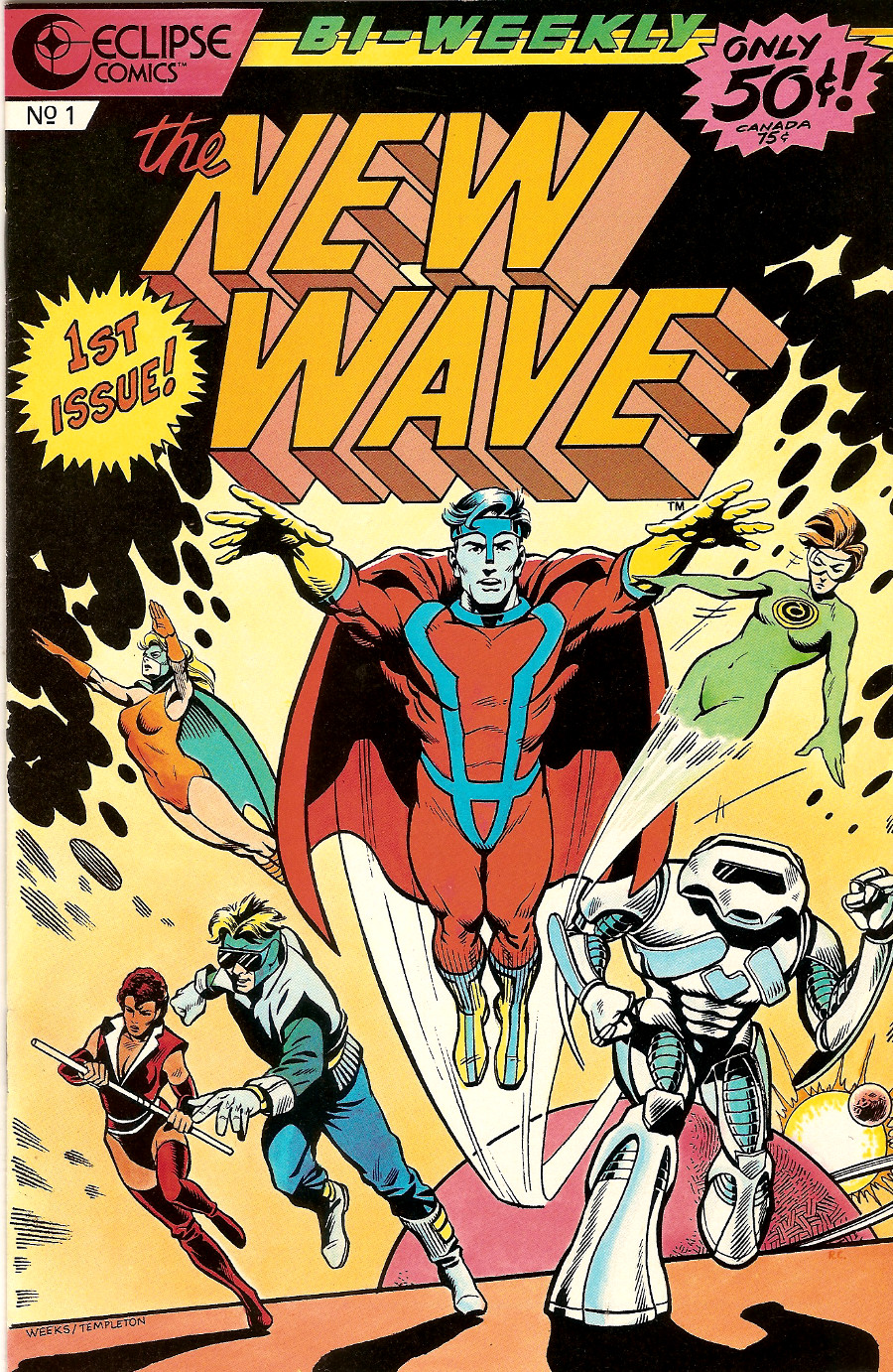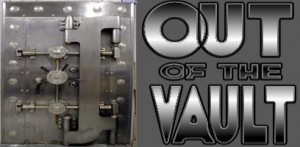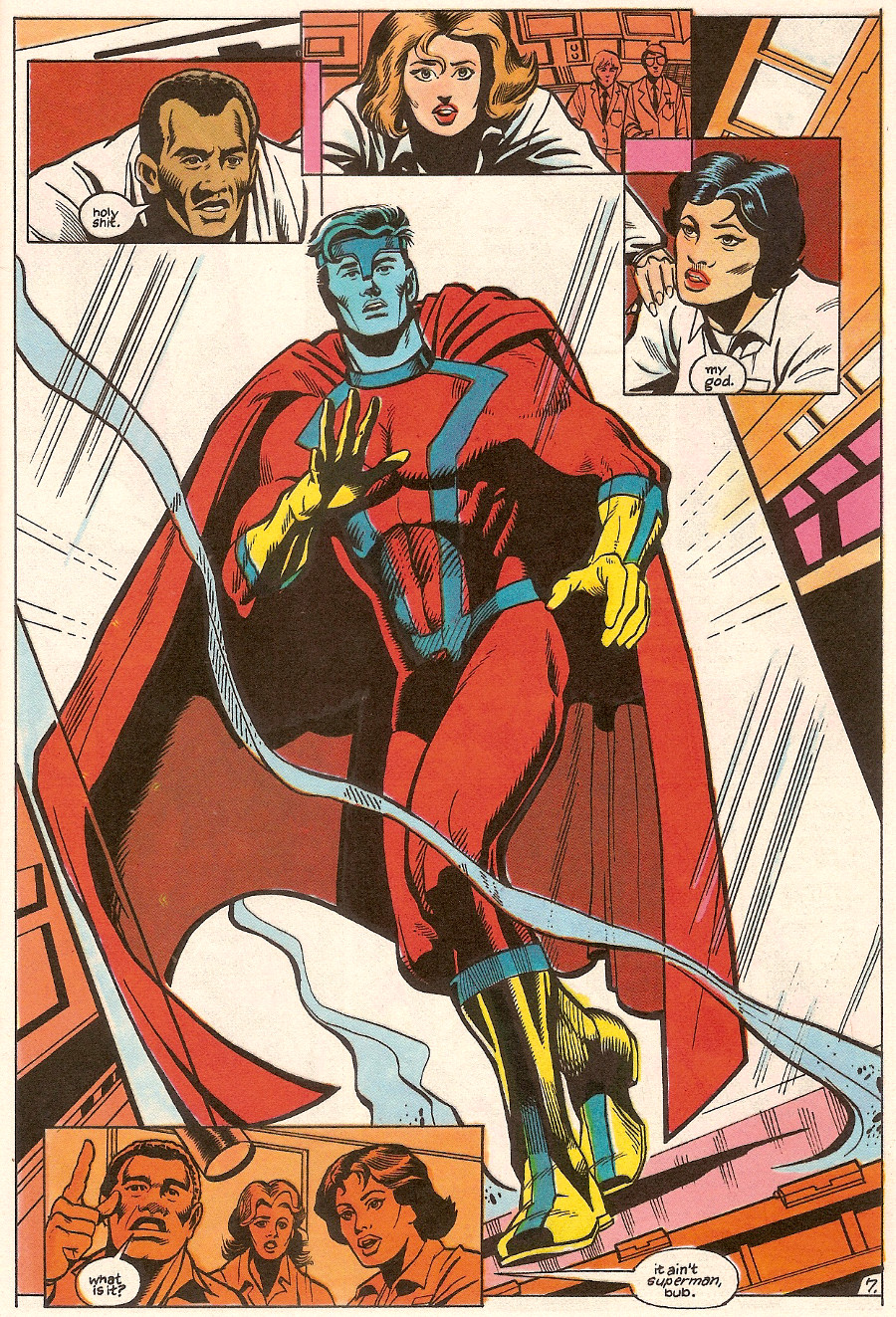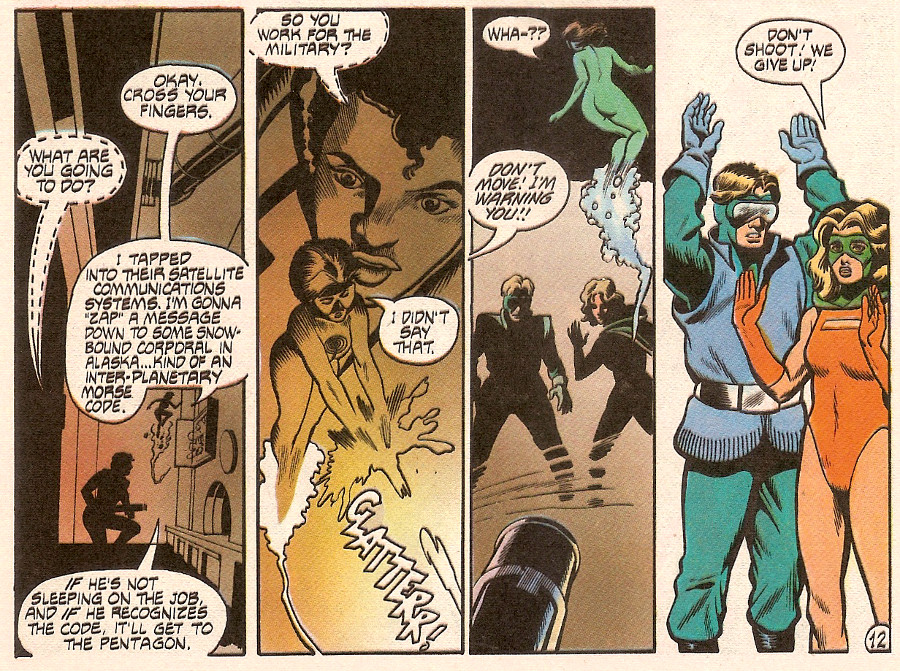 In 1986, Eclipse Comics was one of a few rising comics companies trying to make the leap from independent to major player. Marvel and DC were still dominating the market, of course, but Comico, First and Eclipse were all vying for market share just underneath them.
In 1986, Eclipse Comics was one of a few rising comics companies trying to make the leap from independent to major player. Marvel and DC were still dominating the market, of course, but Comico, First and Eclipse were all vying for market share just underneath them.
Eclipse, having just made a big splash with the revival of Alan Moore’s Marvelman (published in America under the title Miracleman) decided to take the next step by publishing books in their own company universe. They had acquired the rights to the Golden Age Hillman stable of characters, including Airboy, Skywolf, and the Heap, but they also decided to introduce their own superhero team to cash in on the popularity of the X-Men. Eclipse’s new team was called The New Wave.
The were introduced in a special preview section that appeared The New DNAgents #9 and Miracleman #8, in which they met the Heap in a swamp, having just crashed to Earth in a space shuttle. Either the same week or the week after, their first issue was released, which began the backstory of how they got into that shuttle in the first place. Like Airboy, the big gimmick was that it came out in 16-page issues every two weeks (cover price 50 cents) instead of one 32-page book every month.
The story began with a group of scientists on a space station, conducting some sort of experiment to transport matter from another dimension or something. but they didn’t get what they bargained for.
Turns out this whole thing was set up by evil corporate exec Pasternak for undisclosed purposes. The alien being, named Tachyon by the humans, escapes the space station, killing a few people in the process, but then gets lonely and comes back. And meanwhile, Pasternak has kidnapped teenage Elizabeth (daughter of project scientist James Holmes) to keep him in line. Only it also turns out that Elizabeth’s mother was a superhero, and Elizabeth’s teenage boyfriend is telekinetic and meanwhile, there’s this super-powered secret agent named Dot who has infiltrated the station, along with a circus acrobat (she has a stunt pole-vaulting act) named Polestar.
The series had some interesting ideas and some fun character byplay, but suffered from some deadly flaws. Scripter Mindy Newell had never really written an ongoing series before, and it showed. The reasoning behind the experiment that summoned Tachyon was never really explained, nor was the deadly countdown that our heroes had to stop. It was “the end of the world,” but we never knew how that was supposed to work, exactly.
Also, major scenes would be skipped over. That costume that Impulse is wearing in the last panel? We never find out where it came from, why he’s wearing it, or why he suddenly starts getting referred to as Impulse instead of Daniel. It just happens and we’re supposed to roll with it.
The art by Lee Weeks and Ty Templeton varied from solid, but uninspiring, to cluttered and awkward. Both have moved on to bigger and better things, but they were still pretty much brand-new here, and their inexperience showed.
After issue 8, Eclipse canned the bi-weekly format and moved to a normal monthly schedule with their regular price, but it didn’t help. The New Wave folded after 13 issues; I gave up after 8. The series had some interesting ideas, but just never found its groove.






